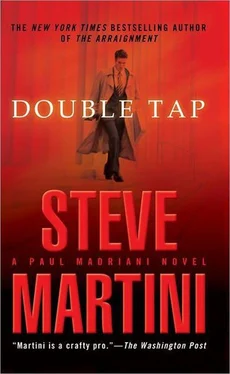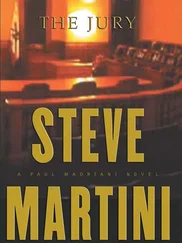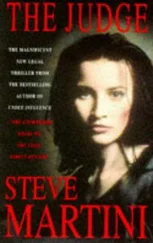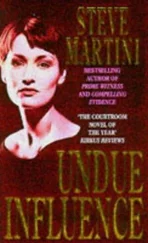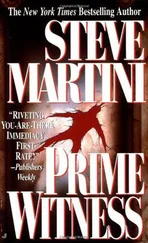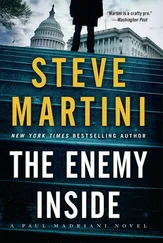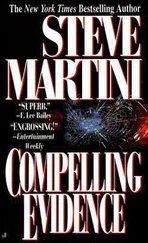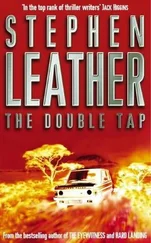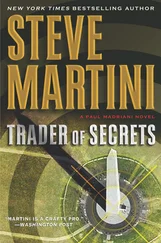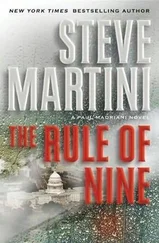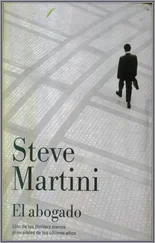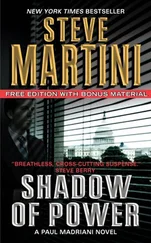Steve Martini - Double Tap
Здесь есть возможность читать онлайн «Steve Martini - Double Tap» весь текст электронной книги совершенно бесплатно (целиком полную версию без сокращений). В некоторых случаях можно слушать аудио, скачать через торрент в формате fb2 и присутствует краткое содержание. Год выпуска: 2014, ISBN: 2014, Издательство: Jove, Жанр: Триллер, на английском языке. Описание произведения, (предисловие) а так же отзывы посетителей доступны на портале библиотеки ЛибКат.
- Название:Double Tap
- Автор:
- Издательство:Jove
- Жанр:
- Год:2014
- ISBN:9781101550229
- Рейтинг книги:4 / 5. Голосов: 1
-
Избранное:Добавить в избранное
- Отзывы:
-
Ваша оценка:
- 80
- 1
- 2
- 3
- 4
- 5
Double Tap: краткое содержание, описание и аннотация
Предлагаем к чтению аннотацию, описание, краткое содержание или предисловие (зависит от того, что написал сам автор книги «Double Tap»). Если вы не нашли необходимую информацию о книге — напишите в комментариях, мы постараемся отыскать её.
Double Tap — читать онлайн бесплатно полную книгу (весь текст) целиком
Ниже представлен текст книги, разбитый по страницам. Система сохранения места последней прочитанной страницы, позволяет с удобством читать онлайн бесплатно книгу «Double Tap», без необходимости каждый раз заново искать на чём Вы остановились. Поставьте закладку, и сможете в любой момент перейти на страницу, на которой закончили чтение.
Интервал:
Закладка:
“Yes. The transfer of that much kinetic energy generally produces shock. Most doctors will tell you that it isn’t the bullet that kills in many cases, especially if it doesn’t hit a vital organ. It’s the fact that the victim goes into shock.”
“So the use of a frangible bullet would be particularly lethal?”
“I would say so, yes.”
“Would you say that someone using a frangible bullet fired at another human being was trying to wound them?”
“No.” The witness smiles. “That’s highly unlikely.”
“Would you say that their intention was clearly to kill the person being shot at?”
“Most likely, yes. Even if you struck the person in an area of the body that might otherwise be considered nonlethal, the transfer of kinetic energy would probably send that person into immediate shock. Unless the victim received very prompt medical attention, they would most likely die.”
“So is it your opinion that the person who fired a frangible bullet into the victim, in this case Madelyn Chapman, would, by the use of that bullet, have indicated a fairly clear intention to kill Madelyn Chapman?”
“Assuming they knew what they were doing, I would say so, yes.”
“Let’s talk about that: whether the shooter in this case knew what he was doing. You are aware that there were two bullets fired into the victim in this case?”
“Yes.”
“And only one of which was frangible?”
“That’s correct.”
“Why would someone, in your opinion, use two different types of bullets fired through the same gun?”
“Objection. Assumes a fact not in evidence,” I say.
Templeton turns and looks at me as if he is mystified.
“We don’t know that the frangible round was fired from that weapon,” I say. “There is no ballistics to confirm that. For all we know, there could have been two weapons fired.”
Templeton moves quickly to dispel the impression that two separate shooters may have acted in concert to kill Chapman. This could present a problem for him. “We know from the trace evidence of the nitrates,” he says, “that there was only one firing position, from the railing over the entry.”
“I’ll sustain the objection,” says the judge. “Reframe the question.”
“Assuming that one person, a single shooter, used the same handgun to fire both rounds, in your opinion, why might that shooter choose to load that weapon with two different kinds of rounds, one frangible and one solid?” Templeton asks.
“Probably for reasons of certainty,” says the witness.
“Could you explain?” says Templeton.
“Frangible rounds, while they are lethal and have their purpose, have been known to fail. In some cases they can fragment before impacting the target. The inclusion of a solid round would provide the assurance that the shooter may have wanted that at least one of the rounds would reach the target.”
“So, by including both types of bullets, the perpetrator-the person who killed Madelyn Chapman-would have had lethality, the deadly effect of the frangible round, and certainty, the reliability of the solid round. Is that correct?”
“In my opinion, yes.”
This is neatly done. Without this theory, Templeton faced the prospect that I might be able to argue with some plausibility that two shooters might have been involved. He has now shut that door nicely.
Templeton now starts to work a different angle. He gets the witness to confirm that he examined the fragments of the frangible round under a microscope and subjected several of the small pieces to examination by gas chromatograph and mass spectrometry. In essence this is a chamber in which the minute bullet fragments were burned at a high temperature and the gas emitted passed through a beam of intense light. The machine is able to identify the chemical composition of the particles. The chromatograph, once married to the mass spectrometer, in which high-energy electrons bombard the molecules of the item being tested, produces what is in essence a chemical fingerprint, no two of which are precisely alike. According to the witness, this allowed the ballistics lab to identify not only the manufacturer of the frangible bullet but the customer who bought it.
“Can you tell the jury,” says Templeton, “if frangible ammunition of the type found here-the frangible fragments taken from the body of the victim Madelyn Chapman-is generally available to the shooting public, to the average citizen over the counter in a gun shop?”
“No.”
“Well, then, who is the customer, the end user, of this kind of ammunition?”
“Generally there are two: law enforcement and the military.”
“And can you tell us, do you know where this particular bullet, the frangible round used to kill Madelyn Chapman, came from?”
“Yes. The Lake City Army Ammunition Plant in Independence, Missouri. A small-arms ammunition manufacturer for the federal government.”
“And do you know who the intended end user, the ultimate consumer of this particular round, was? Which particular agency of the federal government?”
“It was shipped to the United States Army, Quartermaster Corps.”
“Thank you. Your witness.” Templeton comes down and pushes the stool underneath the rostrum.
I wait a second for him to clear the aisle before I take the podium.
“You say you fired several test rounds through the Mark Twenty-three pistol, the one identified as People’s exhibit six, is that correct?”
“Yes. In order to acquire sample bullets against which to compare the one surviving bullet recovered during the autopsy.”
“And did you fire those test rounds, or did someone else fire them?”
“No. I fired them.”
“Let me ask you: When you fired these test rounds, did you mount the silencer, the noise suppressor, that was found along with the weapon at the scene on the firearm, or did you fire the test shots without it?”
“Both,” says the witness. “With the suppressor and without.”
“Why did you do that? Can you tell the jury?”
“Because we wanted to see if there were variations in the ballistics, the microscopic marks that were left on the test rounds.”
“Were there?”
“No.”
“Do you know why there were none?”
“If the suppressor is functioning properly, there shouldn’t be any variations. The bullet should pass cleanly through the bore of the suppressor without making physical contact so that it would leave no detectible striations on the bullet other than those imparted by the lands and grooves inside the barrel of the firearm itself.”
“And that was the case in this instance?”
“Yes.”
“When you fired these test rounds, did you notice any difference or variation in the recoil of the firearm when the silencer, the suppressor, was on the weapon as opposed to when it was not?”
The witness smiles from the stand.
“Your Honor, I’m going to object,” says Templeton. “Exceeds the scope of direct.”
“Your Honor, the state opened the issue of test shots in the lab to confirm ballistics. I think we have a right to explore the area.”
“I’m going to allow the question. You can answer,” says Gilcrest.
“Yes. There was a marked difference in the recoil with the suppressor on the weapon as opposed to not having it on.”
“Perhaps you can explain to the jury what recoil is,” I say.
“It’s the rebounding effect of a firearm as it is discharged. Law of physics: for every action there is an equal and opposite reaction.”
“Is this commonly known by people who shoot as ‘kick’? That when they shoot a pistol or a rifle, they might say it ‘kicks’?”
“Yes.”
“Can you tell the jury how much kick, how much recoil, the forty-five automatic, that gun on the table, People’s exhibit six, produced when you fired the test shots.”
Читать дальшеИнтервал:
Закладка:
Похожие книги на «Double Tap»
Представляем Вашему вниманию похожие книги на «Double Tap» списком для выбора. Мы отобрали схожую по названию и смыслу литературу в надежде предоставить читателям больше вариантов отыскать новые, интересные, ещё непрочитанные произведения.
Обсуждение, отзывы о книге «Double Tap» и просто собственные мнения читателей. Оставьте ваши комментарии, напишите, что Вы думаете о произведении, его смысле или главных героях. Укажите что конкретно понравилось, а что нет, и почему Вы так считаете.
